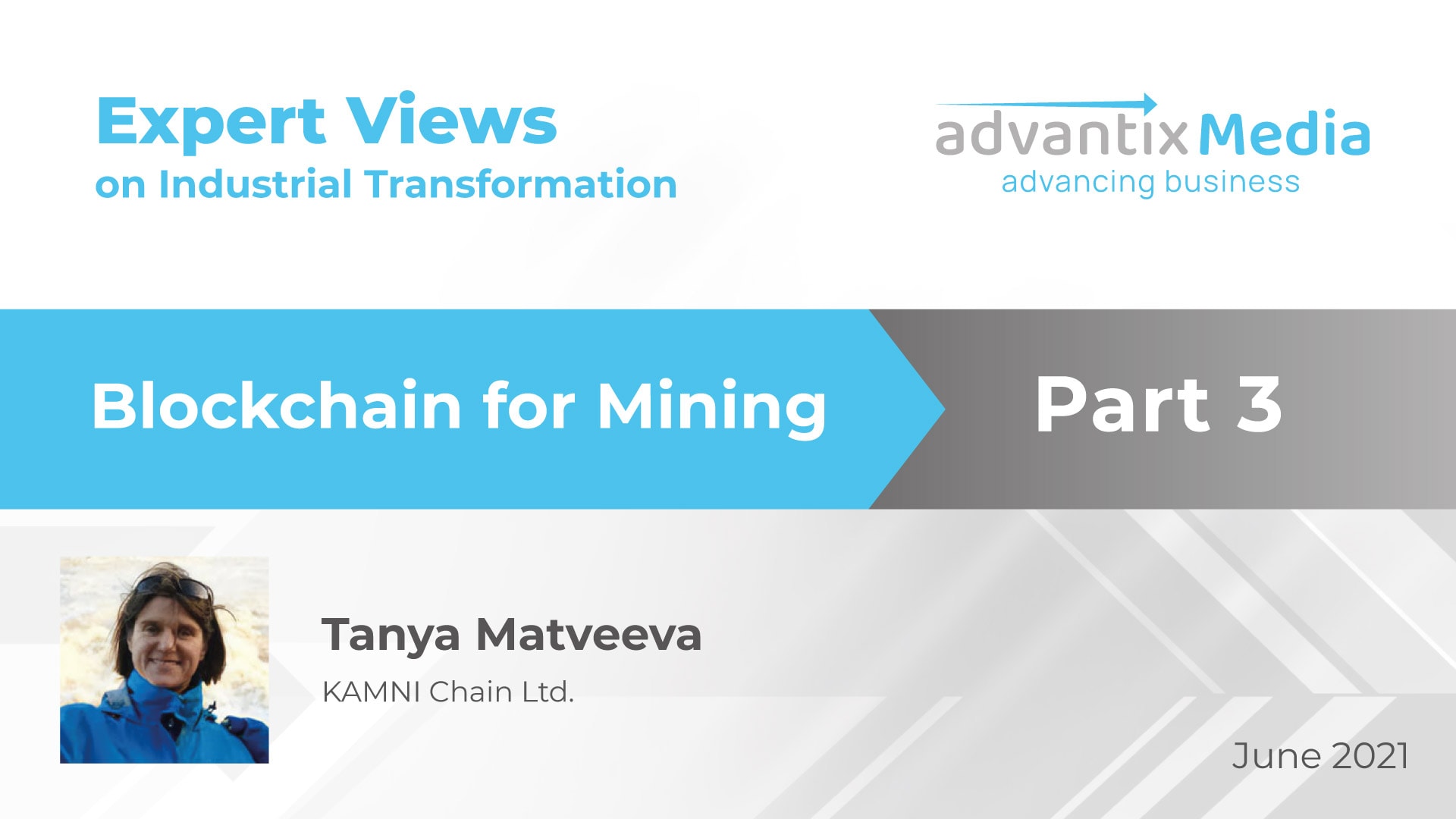Blockchain for Mining – Part 3
Published: 15 June 2021
Part 3:
Tokenisation of metals to attract new investors, to facilitate obtaining permits - Norilsk Nickel. Using blockchain to track environmental and health metrics (Rio Tinto). Blockchain perspectives for exploration and production license management, for transportation logistics, for data management in prospecting operations.

Tanya Matveeva
Geologist
Kamni Chain
Bio
Tanya started her career as a keen young geologist, roaming the mosquito-infested forests on Kola peninsula in Russia exploring for nickel, and snow-covered steppes of Northern Kazakhstan, in search for gold. 5 years with BHP Exploration working in Russia, Kazakhstan and Australia. Then followed 11 years in Canada, working on diamond and gold exploration in Nunavut, base metals in British Columbia, and uranium, coal and shale gas in Alberta. After move to the Netherlands Tanya worked in Africa, evaluating opportunities for rutile in Cameron, tin in Rwanda, bauxite in Guinea and iron ore in Tasmania. Until 2019 Tanya worked for Behre Dolbear Minerals Industry Advisors based in Kent, UK. Working with large datasets taught her respect for good data management, so when she heard about blockchain she realized the great potential this technology holds for mining. Tanya now runs independent consultancy focussed on introducing blockchain technology into the mining business.
General Information
| Date of publication: | 15 June 2021 |
| Lenght: | 24 minutes |
| Location: | UK |
| Languages: | Russian / English |
Blockchain for Mining
Blockchain is a revolutionary digital asset management technology. The mining industry is actively digitalizing, creating the necessary conditions to start taking advantage of blockchain technology. Blockchain allows companies to increase the efficiency of interaction between complex supply chains – from the mine to the buyer. Tokenization on the blockchain provides more flexible conditions for the sale of metals, for obtaining financing. It gives buyers confidence in the origin of metals and minerals and allows them to track meeting the criteria for environmental protection and labour protection. This was not possible before blockchain. The oil and gas industry has been actively introducing blockchain for a long time. Diamond mining companies, companies trading in gold use blockchain, large car manufacturers use blockchain to track metals, large mining companies use metal tokenization – so Norilsk Nickel plans to sell up to 20% of products in the form of tokens. The Kamni Chain company is engaged in the advancement of blockchain technology in the mining industry. This webinar is about how blockchain technology works and where it is already being used by miners, and where there is room for growth.
